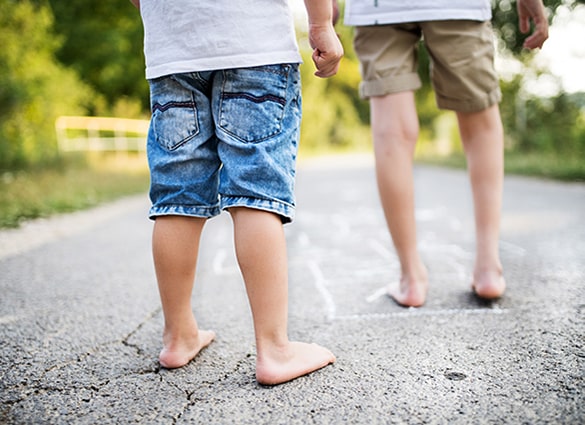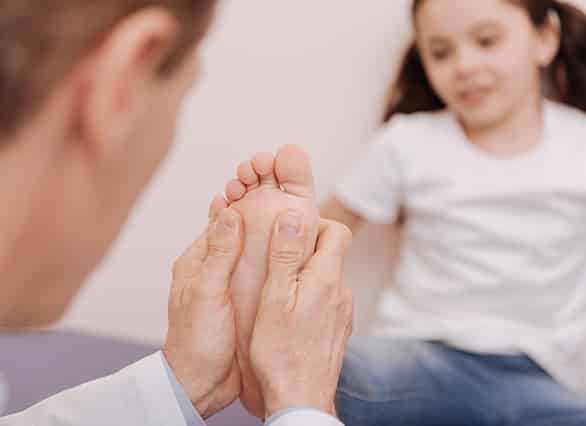
Inflammation of growth plate
Iselin disease is a painful inflammation of the growth plate (apophysis) at the base of the 5th metatarsal bone, on the outside of the foot. The growth plate is made up of cartilage, which is softer and more vulnerable to injury than mature bone. Iselin disease is seen in physically active children 9 -14 years old and it is most common in children involved in running and jumping sports.
The growth plate at the 5th metatarsal fuses by about 12 years in girls and by 14 years in boys. Once the growth plate fuses, the pain usually resolves uneventfully.
What causes Iselin disease?
Iselin disease is most commonly caused by repetitive pressure or tension on the growth plate at the base of the 5th metatarsal bone in the foot. The peroneal tendon attaches to the base of the 5th metatarsal bone, very close to the growth plate and exerts tension on the area causing inflammation and pain. Tight calf or peroneal muscles are considered a risk factor for the development of Iselin disease because they increase tension on the growth plate during physical activity.
Abnormal foot posture (flat feet or high arched feet) can also contribute to the development of Iselin disease. Low quality, unsupportive footwear may also be a contributing factor.


What are the symptoms of Iselin disease?
Most children will present with a limp and complain of pain at the outside edge of the midfoot that is worse with physical activity (running, jumping, dance) and feels better with rest. The child may walk on the inside of the foot to relieve pressure at the growth centre. There may be localized pain, swelling, redness and warmth at the growth centre on the outside of the foot.
How is Iselin disease diagnosed?
A thorough history and physical examination is completed to help make the diagnosis of Iselin disease. On physical examination of the child, your Podiatrist will assess the range of movement in all of the joints in the foot. A gait analysis is performed to look for any abnormalities in the way the feet move during gait. A biomechanical assessment is completed to assess the child’s foot posture. Leg and foot muscle strength testing is also assessed. The child’s school and sports shoes will be examined for abnormal wear patterns.
An x-ray is usually not required to diagnose Iselin disease, however, an xray may be ordered to exclude other painful foot pathologies (eg. 5th metatarsal fracture) that may present with similar symptoms to Iselin Disease


How is Iselin disease treated?
Treatment aims to reduce the pain and inflammation and allow the child to return to their sport or physical activities without pain. Depending on the severity of the symptoms, treatment may include:
- Rest from any aggravating activities
- Ice massage to the inflamed area
- Stretching of the calf and peroneal muscles
- Custom orthotics to address any abnormal foot posture and relieve the pressure on the growth plate.
- Supportive, stable footwear to support the foot while the area heals.
- If the pain is severe, a removable walking boot / brace may be required to help settle the acute symptoms.
If your child is experiencing foot or ankle pain or you are concerned about their gait or foot posture, don’t hesitate to consult with our experienced Podiatrists for a comprehensive walking assessment and professional advice.

